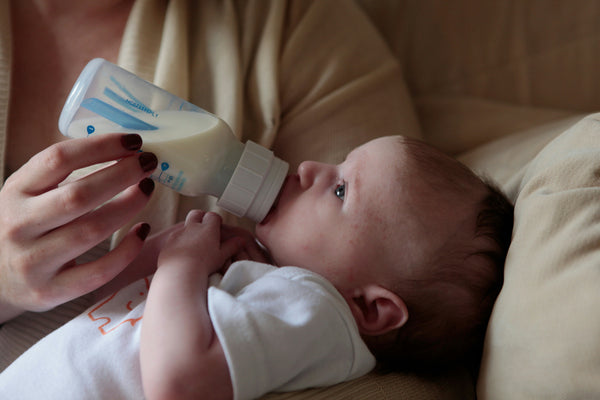Can Prebiotics Replace Stool Softeners in Constipated Kids?
share this article

Constipation is one of the most common digestive complaints in kids, and parents are often left cycling through over-the-counter stool softeners with mixed results. While these products can help in the short term, they don’t address the root cause. More parents are now asking: can prebiotics offer a better, more natural solution?
The short answer is yes—prebiotics can play a powerful role in improving stooling patterns in constipated kids, especially when combined with dietary and lifestyle changes. However, they are not always an immediate replacement for stool softeners, particularly in more severe cases.
Here’s what the science says and how to use both approaches wisely.
What Are Stool Softeners?
Stool softeners like docusate sodium are often used to relieve temporary constipation. They work by pulling water into the stool, making it easier to pass. These can offer quick relief but are not designed for long-term use in kids.
Some drawbacks of overusing stool softeners include:
-
Dependency on medication for bowel movements
-
Disrupted gut microbiome
-
Electrolyte imbalances in chronic cases
-
Masking underlying dietary or digestive issues
Most pediatric experts now recommend a nutrition-first approach whenever possible.
How Prebiotics Support Digestion
Prebiotics are a type of fermentable fiber that feed beneficial gut bacteria. As these bacteria digest prebiotics, they produce short-chain fatty acids (SCFAs) that support gut motility and soften stool naturally by:
-
Increasing water content in the colon
-
Stimulating regular bowel movements
-
Improving stool consistency over time
Prebiotics like chicory root inulin and 2’-fucosyllactose (2’-FL HMO) are particularly well-studied in kids. In a clinical study, kids given chicory root inulin saw improvements in stool frequency and softness within 6 weeks.[1]
Begin Health Expert Tip
At Begin Health, our Growing Up Prebiotics combines both of these gut-friendly ingredients in a tasteless powder that’s easy to add to water, milk, or food. It’s designed to help kids get the prebiotic fiber they often lack from diet alone.
Can You Use Prebiotics Instead of Stool Softeners?
It depends on the severity of the constipation. Here’s how pediatricians typically approach it:
-
Mild to moderate constipation: A daily prebiotic may be enough to restore regularity, especially if combined with more fluids and fiber from whole foods
-
Severe or chronic constipation: Stool softeners may still be needed temporarily, but adding a prebiotic can help support long-term gut health and reduce reliance over time
-
Weaning off stool softeners: Prebiotics can be introduced as a gentle, daily support to maintain regularity once stool softeners are discontinued
Every kiddo is different, so it’s important to talk to a healthcare provider before making big changes—especially if your little one has been on medications long term.
Summary
Prebiotics offer a science-backed, gentle approach to support digestion and improve stool consistency in kids. While they may not immediately replace stool softeners in every case, they are an important part of a long-term solution to prevent recurring constipation. Start with small, consistent steps and work with your pediatrician or dietitian to find the right balance for your family.
















